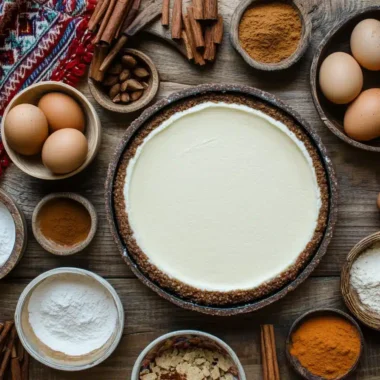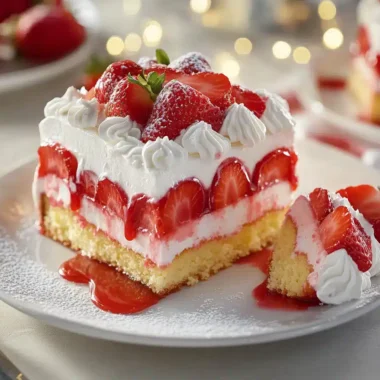Churros—those golden, crispy, sugar-coated treats—are a beloved part of many cultures. But what is a churro in baking, exactly? This article dives deep into their history, how they’re made, and the cultural significance of this iconic pastry. By the end, you’ll know why churros have remained a favorite dessert across the globe, how to make them, and the secrets behind their irresistibly crisp exterior and soft interior. Let’s begin!
Introduction to Churros in Baking
What is a Churro in Baking?
Churros are fried dough pastries, often referred to as the Spanish doughnut. Their texture and flavor result from the preparation process, making them both crisp and tender. They are typically dusted with cinnamon sugar, a simple touch that elevates their sweet, buttery taste. The unique charm of churros lies in their versatility—they can be enjoyed plain, dipped in chocolate, or filled with sweet creams.
Historical Origins of Churros
The history of churros is as fascinating as the pastry itself. Though their exact origin is debated, many believe churros trace back to Spain. According to popular folklore, Spanish shepherds created these simple pastries to replicate Chinese youtiao during their travels. These early churros became a quick and portable snack, easy to fry over an open flame.
However, churros didn’t stop there. Over time, they evolved into the iconic treat we recognize today, gaining popularity in Europe, Latin America, and beyond.
Churros in Spanish and Portuguese Cuisine
In Spanish and Portuguese culinary traditions, churros hold a special place. They’re often enjoyed as a breakfast staple, paired with a rich, thick hot chocolate for dipping. In Spain, these crispy delights are a part of many festive celebrations and gatherings.
Introduction of Churros to Latin America
When Spanish colonists introduced churros to Latin America, the pastry underwent a delightful transformation. Here, it became filled with dulce de leche, guava paste, and other regionally inspired fillings. The Latin American churro is a sweet testament to the fusion of cultures.
Understanding Churro Dough
Ingredients Used in Churro Dough
The foundation of any great churro is its dough. But what makes it so special? Churro dough is a type of choux pastry, a French invention that uses steam for leavening rather than yeast or baking powder. Let’s break it down:
- Flour: Provides structure to the dough. All-purpose flour works best for that perfect balance of elasticity and firmness.
- Water: The base liquid that combines all ingredients and creates steam during cooking, puffing up the dough.
- Butter: Adds richness and creates a tender, melt-in-your-mouth texture.
- Eggs: Give the churro dough its lightness, helping it puff up when fried.
These simple ingredients come together to create the magic behind churros.
Role of Flour and Water in Churro Dough
The ratio of flour to water is crucial in churro dough. Too much flour makes the dough dense, while too little water reduces the puffiness. Water also ensures the dough stays pliable for piping, which is essential to achieve that iconic ridged shape.
Importance of Butter and Eggs in Churro Texture
Butter is the unsung hero of churro dough. It’s what gives the pastry its golden-brown color when fried and a smooth texture when bitten into. Eggs, on the other hand, contribute to the airy interior. Without eggs, churros wouldn’t have their soft and light crumb structure.
The Science Behind Choux Pastry in Churro Making
Churro dough’s use of choux pastry techniques is where science meets art. When the dough is fried, the water content turns into steam, expanding the dough and creating air pockets. This process results in a crispy exterior and a tender, hollow interior. For more about choux pastry techniques, check out this resource.
Techniques in Churro Preparation
Traditional Methods of Frying Churros
The most authentic way to prepare churros is through frying. Frying gives churros their signature crispness and golden hue. Here’s how traditional churro frying works:
- Heat the Oil: A neutral oil, such as sunflower or vegetable oil, is heated to around 375°F (190°C). Maintaining this temperature is key to achieving that crisp exterior without making the churros greasy.
- Piping the Dough: The dough is piped directly into the hot oil using a star-shaped nozzle. The ridges on the churros enhance the crisp texture.
- Frying to Perfection: Each churro is fried until it turns a deep golden brown, which usually takes 2–3 minutes per side.
The result is a light, airy interior wrapped in a crunchy, caramelized crust.
Achieving the Perfect Crispness
The secret to crispy churros lies in maintaining consistent oil temperature. If the oil is too hot, the outside will burn before the inside cooks. Too cool, and the churros will absorb excess oil, becoming soggy.
Pro tip: Frying in small batches helps regulate the oil temperature and ensures each churro gets the attention it deserves.
Common Mistakes to Avoid When Frying Churros
Even seasoned bakers can stumble when making churros. Here are some pitfalls to watch out for:
- Using cold dough: Room-temperature dough fries more evenly.
- Crowding the fryer: Overloading the pan can lower the oil temperature.
- Skipping the sugar coating: The cinnamon-sugar coating adds texture and flavor—don’t skip it!
Baking Churros: A Healthier Alternative
For a lighter version, baked churros are an excellent option. While they lack the deep-fried crunch, baked churros still offer a delightful taste and texture.
- Prepare the Dough: The dough remains the same as for fried churros.
- Pipe onto a Baking Sheet: Pipe the dough into churro shapes directly onto a parchment-lined tray.
- Bake Until Golden: Bake at 375°F (190°C) for about 20 minutes, flipping halfway for even browning.
Adjustments Needed for Baked Churros
Baked churros benefit from a light coating of melted butter before going into the oven. This mimics the caramelization of frying, giving them a more golden appearance.
Comparing Texture and Flavor: Baked vs. Fried Churros
While fried churros are undeniably crispy and indulgent, baked churros offer a less greasy alternative. Baked churros are ideal for health-conscious individuals, but traditionalists often prefer the fried churro’s crunch and classic taste. For those seeking healthier fried food ideas, check out this guide.
In the next section, we’ll look at how to enjoy churros, from traditional pairings to modern twists. Ready to dive in?
Serving and Enjoying Churros
Traditional Accompaniments: Chocolate and Beyond
Churros are often enjoyed with a side of dipping sauce, and the most popular accompaniment is a thick, rich hot chocolate. This pairing originates from Spain, where the slightly bitter chocolate complements the sweet, crispy churro perfectly.
Other traditional accompaniments include:
- Caramel Sauce: Adds a buttery sweetness.
- Dulce de Leche: A favorite in Latin America, offering a creamy, caramelized flavor.
- Sweetened Condensed Milk: For an extra indulgent dip.
Regional Variations in Churro Accompaniments
Across the globe, churros are paired with various regional favorites:
- In Mexico, churros are sometimes served with a sprinkling of chili powder for a spicy twist.
- In the Philippines, they’re dipped in ube-flavored sauces, embracing the local love for purple yam.
- In Portugal, churros are dusted with powdered sugar or cinnamon instead of being dipped.
Modern Twists: Innovative Churro Dips and Fillings
Today, churros have become a canvas for culinary creativity. Here are some modern twists:
- Nutella-filled Churros: A hazelnut spread brings a creamy surprise inside.
- Fruit Compote Dips: Strawberry or raspberry sauces offer a tangy contrast to the churro’s sweetness.
- Savory Churros: These are made with cheese or herbs, served alongside savory dips like marinara or aioli.
Churros in Popular Culture and Festivals
Churros are not just a snack—they’re a cultural phenomenon. In countries like Spain, they are a staple at fairs and festivals, often served from food carts or stalls. In Latin America, street vendors commonly sell churros, filling the air with the irresistible aroma of fried dough and cinnamon sugar.
Moreover, churros have taken on a modern life in pop culture. They’re Instagram-worthy treats, often styled in creative ways for maximum visual appeal. Specialty churro shops have sprung up worldwide, offering gourmet versions of this humble pastry.
Churro Recipe: Ingredients and Step-by-Step Instructions
Ingredients for Traditional Churros
Here’s everything you’ll need to make approximately 12 medium-sized churros:
The Dough:
- 1 cup (240ml) water
- 2 ½ tablespoons (35g) unsalted butter
- 1 tablespoon (12g) granulated sugar
- ¼ teaspoon salt
- 1 cup (125g) all-purpose flour
- 2 large eggs
- 1 teaspoon vanilla extract
Frying:
- 2-3 cups vegetable oil (for frying)
For Coating:
- ½ cup (100g) granulated sugar
- 1 teaspoon ground cinnamon
For Optional Dipping Sauce:
- 1 cup (240ml) heavy cream
- 200g dark chocolate chips
- 1 tablespoon butter
Step-by-Step Cooking Instructions
1. Prepare the Churro Dough
- In a medium saucepan, combine water, butter, sugar, and salt. Heat over medium heat until the butter melts and the mixture begins to simmer.
- Remove the saucepan from heat and immediately stir in the flour until the mixture forms a smooth, thick dough.
- Let the dough cool slightly for about 5 minutes.
- Beat the eggs one at a time into the cooled dough using a wooden spoon or hand mixer. Add vanilla extract and mix until fully incorporated. The dough should be smooth and pipeable.
2. Heat the Oil
- Pour vegetable oil into a deep skillet or pot, filling it about 2 inches deep.
- Heat the oil to 375°F (190°C) using a candy or frying thermometer for accuracy.
3. Pipe and Fry the Churros
- Transfer the dough into a piping bag fitted with a star-shaped nozzle.
- Pipe the dough directly into the hot oil, cutting it with scissors to your desired length (4-6 inches works best).
- Fry 2-3 churros at a time to avoid overcrowding, cooking for 2-3 minutes per side until golden brown.
- Use a slotted spoon to transfer the fried churros to a paper towel-lined plate to drain excess oil.
4. Coat the Churros
- In a shallow dish, mix granulated sugar and cinnamon.
- Roll the warm churros in the cinnamon-sugar mixture until fully coated.
5. Prepare the Dipping Sauce (Optional)
- Heat heavy cream in a small saucepan over low heat until it just starts to simmer.
- Remove from heat and stir in dark chocolate chips and butter until smooth and glossy.
- Serve the warm sauce alongside the churros.
| Nutrient | Amount (Per 100g) |
|---|---|
| Calories | 350 kcal |
| Carbohydrates | 45g |
| Protein | 5g |
| Fat | 16g |
| Saturated Fat | 8g |
| Fiber | 2g |
| Sugar | 12g |
| Sodium | 200mg |
Frequently Asked Questions (FAQs) About Churros in Baking
What is the origin of churros?
Churros are believed to have originated in Spain, inspired by Chinese youtiao. Spanish shepherds created these portable pastries, and over time, they became a cultural icon. Today, churros are enjoyed worldwide, often with regional twists.
Can churro dough be made in advance?
Yes, churro dough can be prepared in advance! You can refrigerate it for up to 24 hours. However, it’s best to let the dough come to room temperature before frying to ensure even cooking and optimal texture.
What is the best oil for frying churros?
Neutral oils like vegetable, canola, or sunflower oil are ideal for frying churros. They have high smoke points, ensuring the churros fry evenly without imparting any unwanted flavors.
How do baked churros compare to fried ones in taste?
Baked churros are a healthier alternative, offering a lighter texture and less greasy finish. While they lack the deep crunch of fried churros, the golden exterior and cinnamon-sugar coating still make them a delightful treat.
Are churros vegan-friendly?
Traditional churros are not vegan, as they often contain butter and eggs. However, you can make vegan versions by using plant-based butter and egg substitutes like flaxseed or aquafaba.
What are common mistakes to avoid when making churros?
Here are some pitfalls to avoid:
- Skipping the piping bag: It’s essential for that ridged shape.
- Frying at the wrong temperature: Too hot or too cold oil ruins the texture.
- Not drying them properly: After frying, let the churros sit on paper towels to remove excess oil.Conclusion and Wrap-Up
Churros are more than just a sweet treat—they’re a cultural and culinary icon loved across the globe. From their origins in Spain to their evolution into regional favorites in Latin America and beyond, churros have captivated taste buds with their crispy, golden perfection.
Understanding what a churro is in baking means appreciating the balance of simplicity and artistry. The dough, made from basic ingredients, transforms into a masterpiece through frying or baking. Whether you enjoy them traditionally with hot chocolate, explore modern twists with unique dips and fillings, or experiment with healthier baked versions, churros are endlessly versatile.
The next time you bite into a churro, you’re savoring centuries of history, innovation, and pure delight. So grab a plate, dust them with cinnamon sugar, and dip into something delicious—churros truly are the sweet celebration of baking.
Conclusion and Wrap-Up
Churros are more than just a sweet treat—they’re a cultural and culinary icon loved across the globe. From their origins in Spain to their evolution into regional favorites in Latin America and beyond, churros have captivated taste buds with their crispy, golden perfection.
Understanding what a churro is in baking means appreciating the balance of simplicity and artistry. The dough, made from basic ingredients, transforms into a masterpiece through frying or baking. Whether you enjoy them traditionally with hot chocolate, explore modern twists with unique dips and fillings, or experiment with healthier baked versions, churros are endlessly versatile.
The next time you bite into a churro, you’re savoring centuries of history, innovation, and pure delight. So grab a plate, dust them with cinnamon sugar, and dip into something delicious—churros truly are the sweet celebration of baking.





